cycle lanes
Space for cycle lanes – it can be found!
Whenever I tell people about my dream of having some decent cycling infrastructure in the UK, I am frequently met with the same point about there not being enough space on British roads. The general feeling is that roads are already too narrow, and that there simply isn’t any room to accommodate the type of segregated cycle lanes that work so well on the continent.
In opposition to this, I would like to present you with a group of photos taken from Google Streetview. In the left column you have shots of roads/junctions in the UK, and in the right column you have almost identical shots of places in The Netherlands. The point of the side-by-side comparison is to show how space is used differently, and how the Dutch so sensibly choose to separate pedestrians and cyclists from cars and HGVs. The streets are so similar that they could almost be before and after photos…
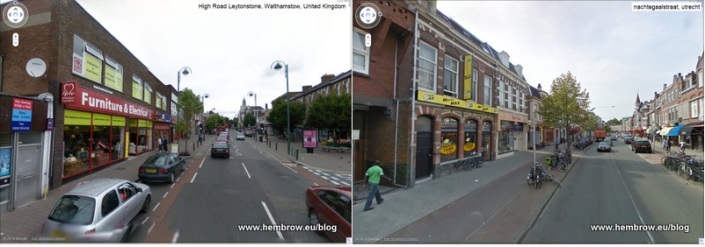
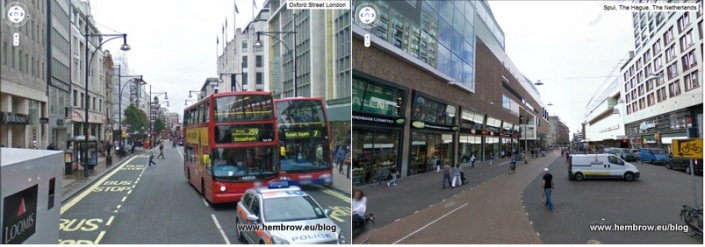
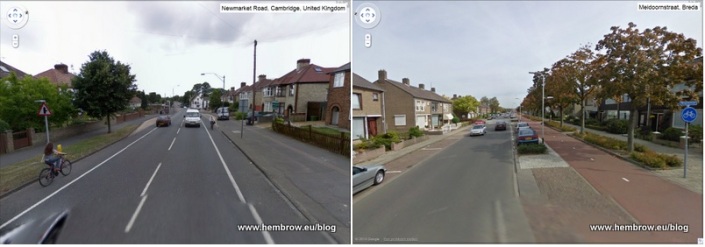
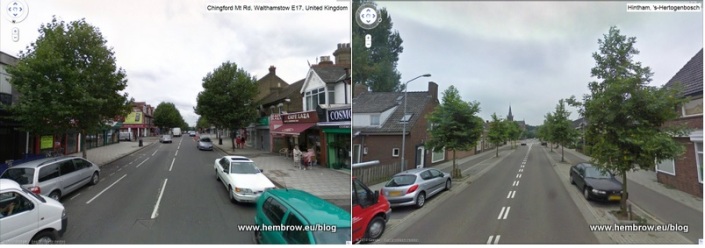
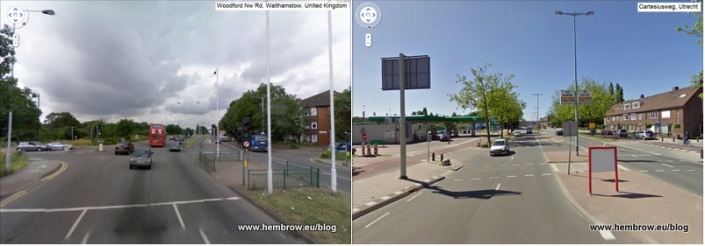
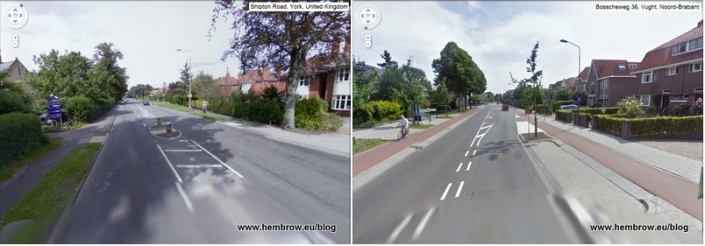
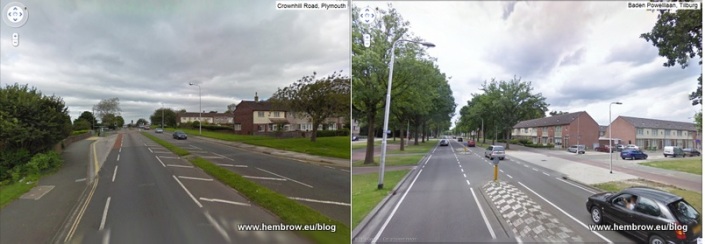
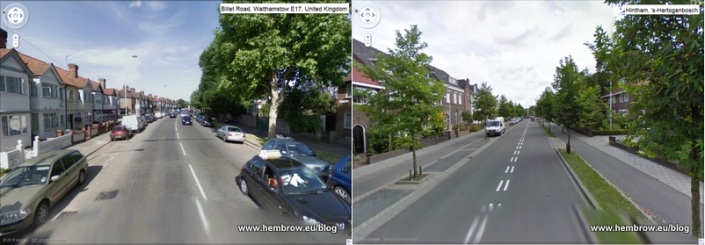
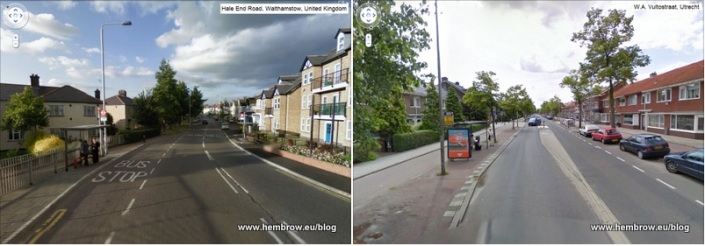

In each case, the cycling provision in the UK is rubbish or non-existent, while that provided on a similar street in The Netherlands offers a far superior cycling experience. Of course, if cycle lanes were better then more people would cycle, and if more people were riding bikes then there would be fewer cars on the road and so less congestion and less pollution. Everyone benefits, right?
The following video explains how the Dutch got their cycle paths, and how their cities made the transition from being car-centric to being more bicycle friendly.
What the Dutch have achieved is truly remarkable, and this is why I always hold them up as the best example for the UK to follow. They are the only country in the world able to boast the fact that more than a quarter of all their journeys are made by bike, and it would be my dream come true if we could achieve this feat in the UK.
Related articles
- Making cycle lanes safe (cyclingnelly.wordpress.com)
- Crosspost: Cyclists and pedestrians as ‘hazards’ for motorists. #wordlturnedupsidedown #takecaregtrmcr (manchesterclimatemonthly.net)
- No, it’s not the narrowest cycle path in Britain! (cyclingnelly.wordpress.com)
- Only 10 fines for illegal cycle lane parking (belfasttelegraph.co.uk)
Added benefits of segregated cycle lanes
Video Posted on Updated on
Another masterpiece from our friends at NL Cycling.
It’s not just people on bikes who benefit from good infrastructure. Check out the video and see for yourself.
Nothing but good stuff
John Snow calls for improvements in cycling infrastructure
Video Posted on Updated on
http://www.bbc.co.uk/news/uk-politics-25046751
Veteran journalist John Snow is also an avid cyclist.
He has commuted by bike both to and from work every day for the last 40-odd years, and he raises some valid points about the dangers of riding a bike and the inadequacy of cycle safety provisions.
He talks about the probability of ‘big rewards’ for the first politician to re-draw the urban map and prioritise cyclists and pedestrians. In terms of combating obesity, reducing pollution, and making our cities more pleasant places to live, I think I can see why such a measure would be well received.
He states that, as humans, we respond to our surroundings. On the issue of cyclists who flout the law, the point he makes is that good behaviour will come when there are good provisions to protect and facilitate cycling. At the moment, it is a dog-eat-dog world out there on the roads; as the underdogs, cyclists are therefore put in a position of vulnerability, and have to make the most of their situation. Snow doesn’t condone bad behaviour on the roads, but he can at least appreciate why it happens.
Also of interest: http://www.bbc.co.uk/news/uk-25013438 and http://www.bbc.co.uk/news/uk-25014296
Related articles
- VIDEO: Snow’s verdict on dangers of cycling (bbc.co.uk)
- Cycling policy ‘getting better’ (bbc.co.uk)
100 miles of Dutch-Style Bike Lanes planned for Bristol
Link Posted on Updated on
100 Miles of Dutch-Style Bike Lanes for Bristol
In a bid to save lives and reduce the fear factor preventing people from taking to two wheels, Bristol is to announce radical new proposals which will make it Britain’s first city to adopt a truly Dutch-style network of cycle lanes.
Already the UK’s top cycling city with an estimated 16,000 regular cyclists, the 100 miles of cycle paths are due to be operational as soon as Spring 2014!
In contrast to this fantastic news, the national picture is comparatively bleak. With cycle uptake ever on the increase, the number of cyclists killed or injured on Britain’s roads is at its highest for three years: 118 deaths and 3,222 injuries recorded in 2012. Although these figures represent regrettable injuries and tragic loss of life, statistics like these are what motivated the Dutch to unite as a nation and demand the changes that led to their precedent-setting infrastructure.
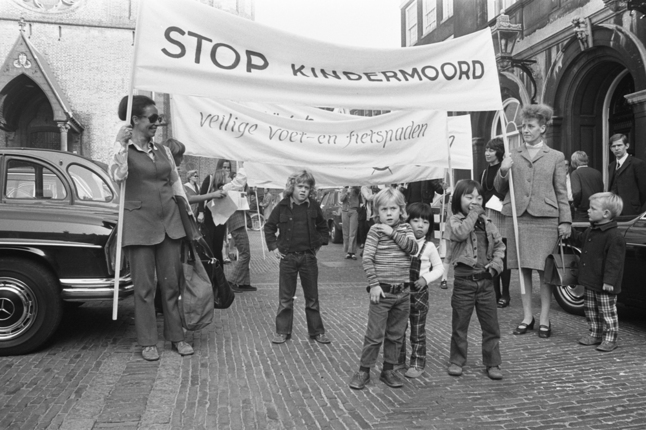

In other (related) news, a new peer-reviewed study has revealed that financial investment in cycling infrastructure can increase the share of journeys taken by bike. This might seem like the predictable answer to another do-bears-poop-in-the-woods sort of question, but it’s not always cut-and-dried that spending to achieve a goal actually works. Look at roadbuilding, for instance: billions of pounds are pumped into constructing new roads in order to reduce congestion, yet congestion keeps on increasing.
Ridiculous, unnecessary, and obvious as it seems, it’s still good press. Click here for the Guardian article.

Related articles
- Dutch-style bike lanes set for roll-out in Bristol – Britain’s cycling capital (independent.co.uk)
- City’s ‘Dutch-style’ bike lane plans (bbc.co.uk)
- Move over Amsterdam, the London cycling revolution is in top gear (standard.co.uk)
- New Denver Bike Lanes Not Only Safer, Good For Business (denver.cbslocal.com)
Absolutely brilliant short film about Amsterdam as a city of cycling – top recommendation
Video Posted on Updated on
Absolutely brilliant short film about Amsterdam as a city of cycling – top recommendation
I just came across this video (embedded in the link above) and after 10 seconds I knew that I had to share it.
The movie illustrates the whole ‘bikes > cars’ philosophy, and shows how it can be made to work for everyone’s benefit even in a busy capital city. When you put bikes first and cars second, the whole urban environment is transformed for the better.
One of the interviewees talks about how people are connected when they are on bikes and I completely understood what they meant – having lived in Amsterdam for a year I quickly picked up on the shared mentality and emergent camaraderie that exists between people on bikes and stands opposed to the isolation of the motorists.
Top video – thorough recommendation
